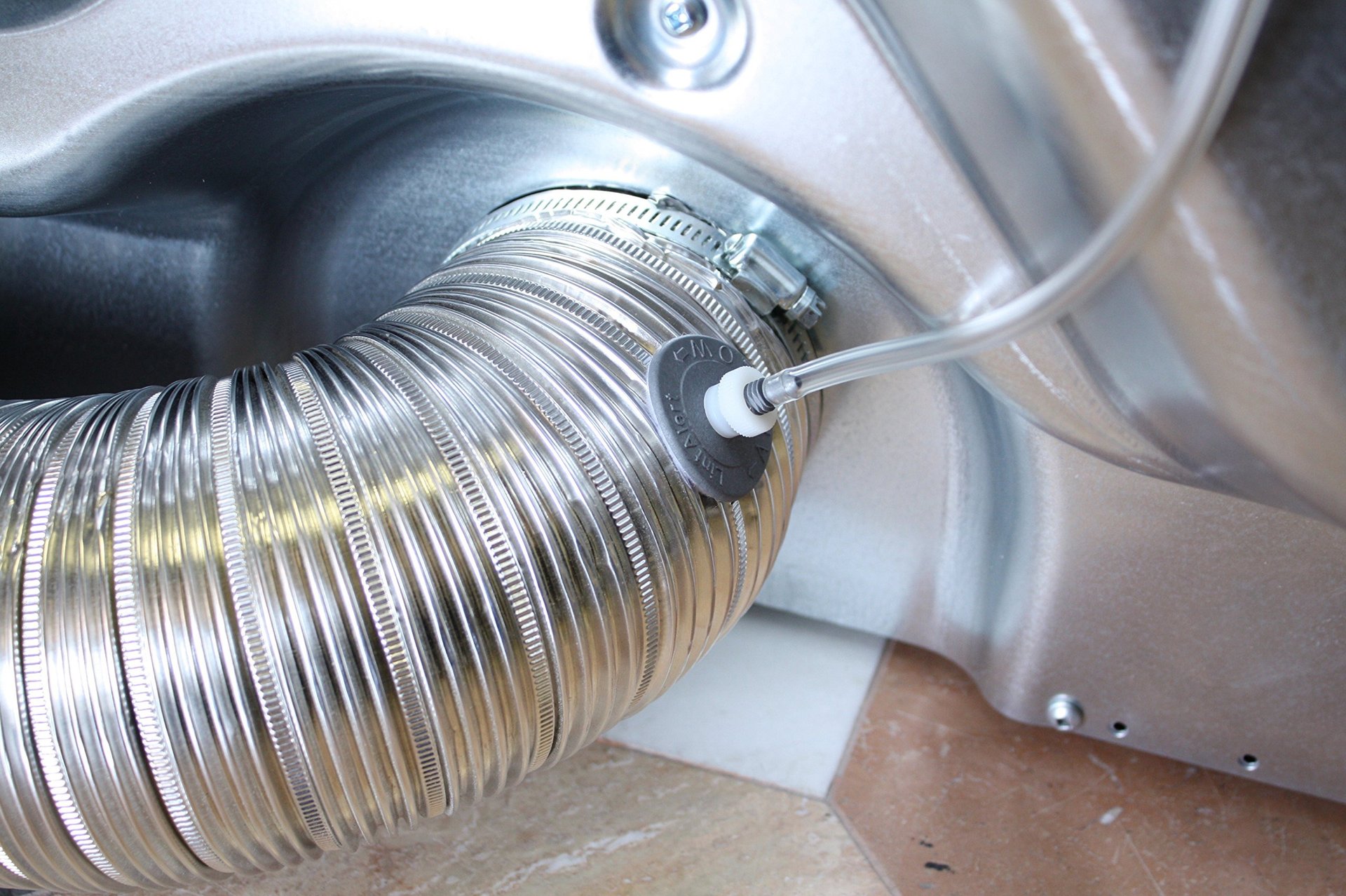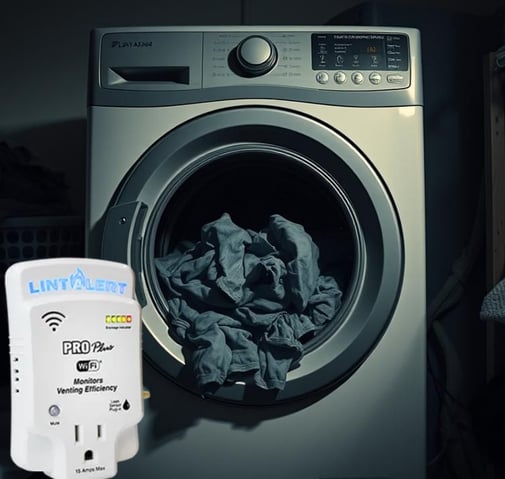
Understanding Dryer Lint Alarm Systems: A Key to Fire Safety
A dryer lint alarm system is an advanced safety device designed to detect the accumulation of lint in dryer vents and ductwork. Its primary purpose is to alert homeowners to potential blockages that can pose a serious fire hazard. Most dryer-related fires are caused by lint buildup, which restricts airflow and causes overheating
3/16/20257 min read


What is a Dryer Lint Alarm System?
A dryer lint alarm system is an advanced safety device designed to detect the accumulation of lint in dryer vents and ductwork. Its primary purpose is to alert homeowners to potential blockages that can pose a serious fire hazard. Most dryer-related fires are caused by lint buildup, which restricts airflow and causes overheating. By employing this specialized system, users can proactively address issues before they escalate into dangerous situations.
These alarm systems utilize a variety of technologies to monitor airflow and lint buildup. Many modern units feature sensors that are strategically placed within the dryer vent pathway. When these sensors identify an increase in heat or a reduction in airflow, they trigger alarms to notify users of potential problems. Some systems are equipped with LED indicators to visually signal when maintenance is needed. As the focus on home safety continues to grow, dryer lint alarm systems serve as a critical tool for preventing household fires and promoting dryer efficiency.
In addition to enhancing safety, maintaining optimal dryer performance is another significant aspect of a lint alarm system. By alerting users to lint accumulation, these systems support the operation of dryers, allowing them to function more efficiently. This not only extends the life of the appliance but also contributes to energy savings, as clogged vents can lead to longer drying times and increased energy consumption.
Investing in a dryer lint alarm system can ultimately provide homeowners peace of mind. Understanding how these systems work and their importance in fire prevention and dryer maintenance is crucial for any individual relying on a dryer. Through timely alerts and regular monitoring, these devices play a vital role in safeguarding homes against fire risks associated with lint buildup.
How Does a Dryer Lint Alarm Work?
Dryer lint alarm systems play a crucial role in enhancing fire safety in households. These devices essentially monitor the performance of your dryer by tracking airflow and lint buildup. At the heart of the system are specialized sensors designed to detect changes in airflow, which indicate potential blockages caused by lint accumulation. When the airflow falls below a predetermined threshold, it signals that lint may be obstructing the venting system.
To illustrate the mechanism in detail, airflow sensors often utilize thermistors or pressure sensors that measure temperature changes and airflow dynamics. This data is continuously analyzed by the alarm system’s control unit. When it detects insufficient airflow, it prompts the system to generate an alert. This alert system can be either audible, featuring alarms that ring to notify the household, or visual, using LED indicators. Additionally, more advanced dryer lint alarms incorporate connectivity features, enabling them to send notifications to smartphones or other connected devices. Such integration helps homeowners to receive real-time alerts regardless of their location, prompting them to take necessary actions to prevent fire hazards.
Moreover, these alarm systems are designed for simple installation and integration with most existing dryer setups. They typically consist of a compact unit that can be mounted near the dryer vent or integrated directly into the dryer itself. Depending on the model, some systems can even offer complementary features such as automatic reminders for routine dryer maintenance, further emphasizing their utility in promoting safety. By understanding the workings of a dryer lint alarm, homeowners can appreciate its importance in fire prevention and overall dryer efficiency.
The Role of Lint Buildup in House Fires
Lint accumulation in clothes dryers and their corresponding vents represents a significant fire hazard in residential settings. According to the National Fire Protection Association (NFPA), dryers and washing machines were involved in an estimated 15,970 reported home structure fires in the United States in 2018, leading to numerous injuries and fatalities. A staggering 27% of these incidents were attributed to dryer lint buildup, underscoring the critical need for regular maintenance and monitoring.
The flammability of lint is primarily due to its composition. Lint consists mainly of tiny fibers shed from clothing—such as cotton, polyester, and other synthetic materials—which can easily ignite when exposed to heat. The environment within a dryer is conducive to lint ignitability; temperatures can reach upwards of 150°F (65°C) under normal operating conditions. If lint obstructs the dryer vent or exhaust, it effectively traps heat and can precipitate a fire. Once ignited, the fire can spread rapidly, threatening not only the appliance itself but also the entire home.
Ignoring lint buildup poses severe safety risks for households. Over time, the accumulation can lead to reduced airflow, causing the dryer to overheat and increasing the likelihood of fire risk. Regular inspections and cleanings of the lint trap and venting system are essential preventive measures. Utilizing vent-safe materials and ensuring that the dryer is vented externally can further mitigate these dangers. Homeowners must be vigilant regarding lint accumulation to protect their property and loved ones. Incorporating a reliable lint alarm system can serve as an added layer of safety, offering alerts when buildup reaches a hazardous level.
Preventing House Fires with a Dryer Lint Alarm
Dryer lint alarms represent a critical advancement in home fire safety, functioning as an early warning system that detects lint buildup in dryer vents. Lint accumulation is a leading cause of house fires, with the National Fire Protection Association reporting that thousands of residential fires are sparked annually due to faulty dryers. A dryer lint alarm can significantly mitigate this risk by alerting homeowners when a blockage occurs, prompting timely cleaning and maintenance.
Proactively installing a dryer lint alarm offers several preventative measures that enhance household safety. These alarms utilize sensors to monitor airflow and detect when lint starts to obstruct vent pathways. An alert can indicate that the dryer is not functioning efficiently, which may lead appliances to overheat and potentially catch fire. Early intervention not only protects lives but can also save homeowners from costly property damage.
Numerous case studies and testimonials from individuals who have adopted dryer lint alarms illustrate their effectiveness. For instance, one homeowner reported successfully preventing a fire after receiving a warning from their dryer lint alarm. They noticed that the alarm had detected a buildup that would have otherwise gone unnoticed, allowing them to remove the obstruction and avoid disaster. Such experiences are common, as many users express gratitude for the peace of mind that these systems provide.
Furthermore, education about dryer maintenance complements the function of lint alarms. Users are encouraged to ensure regular cleaning of lint filters and vent systems in conjunction with alarm advisories. This holistic approach to fire prevention underscores the necessity and value of having a dryer lint alarm in one’s home. By prioritizing this simple yet effective technology, homeowners can safeguard their families and properties against potential fire hazards stemming from dryer use.
Benefits of Installing a Dryer Lint Alarm System
The installation of a dryer lint alarm system provides numerous advantages that significantly enhance fire safety in residential settings. One of the most compelling benefits is the enhancement of safety. Lint buildup within dryer vents is a leading cause of house fires, with reports indicating that failure to clean lint screens is a primary factor. A dryer lint alarm system detects excess lint accumulation and alerts homeowners before it becomes a serious hazard, effectively reducing the risk of fire and ensuring a safer living environment.
In addition to improved safety, dryer lint alarm systems also yield substantial cost savings related to potential fire damage. Addressing a fire emergency can incur extensive financial burdens, including property loss, damage to personal belongings, and even related insurance premiums. By proactively monitoring lint accumulation, homeowners can prevent costly fire-related incidents, making these alarm systems a worthwhile investment in home safety and financial prudence.
Moreover, these systems contribute to improved dryer efficiency. When lint builds up in dryer vents, airflow is obstructed, forcing the appliance to work harder and consume more energy. This inefficiency can significantly impact energy bills over time. By integrating a dryer lint alarm system into one’s home, users are encouraged to maintain optimal dryer performance through timely lint removal, ultimately prolonging the lifespan of the appliance while promoting energy conservation.
Convenience also underscores the appeal of a dryer lint alarm system. Homeowners often overlook the importance of regularly checking lint build-up due to busy schedules and daily tasks. With automated notifications, users receive timely reminders to inspect and clear lint, fostering an ongoing commitment to home safety. This functionality not only simplifies maintenance routines but also cultivates an awareness of home fire safety, ensuring that precautionary measures are always prioritized.
Choosing the Right Dryer Lint Alarm System
When selecting a dryer lint alarm system, it is essential to consider several key factors to ensure you choose the most appropriate system for your unique needs. One of the primary elements to investigate is the sensor technology utilized in the alarm system. Many modern dryer lint alarms employ advanced sensors to detect lint buildup accurately, providing timely warnings that can prevent hazardous situations. Look for systems that offer both visual and audible alerts, as these features enhance your ability to respond effectively to potential fires.
Another important consideration is compatibility with various dryer models. Some alarm systems are designed to work with specific types of dryers, while others feature universal compatibility. Before making a purchase, verify that the dryer lint alarm you are considering can be easily integrated with your existing appliance. Compatibility ensures that the system functions optimally, providing the best possible safety for your household.
Ease of installation is also a critical factor to assess when selecting a dryer lint alarm. Many systems are designed for simple and quick installation, often requiring minimal tools or technical knowledge. This consideration can significantly enhance user satisfaction, as a straightforward setup process allows homeowners to protect their homes against lint buildup without excessive hassle.
Lastly, price points vary widely among dryer lint alarm systems. It is advisable to assess your budget while also considering the long-term benefits of investing in a reliable fire safety device. Higher-priced models may offer advanced features or greater reliability, though budget-friendly options can still provide essential functionality and peace of mind. Evaluating your needs alongside these factors will ultimately guide you in making an informed decision about the right dryer lint alarm system for your home.
Maintenance and Best Practices for Using a Dryer Lint Alarm
To ensure the optimal performance of a dryer lint alarm system, adherents must prioritize maintenance and implement best practices. Regular cleaning is paramount; lint accumulation not only interferes with the dryer’s performance but also poses significant fire hazards. It is advisable to clean the lint trap after every use to prevent buildup and allow for proper airflow. In addition to cleaning the lint trap, the dryer vent system should be inspected and cleaned at least once a year, or more frequently if the dryer is used intensively.
An equally important facet of maintaining a dryer lint alarm is routinely testing the alarm's functionality. Many systems come equipped with test buttons that simulate smoke or lint conditions, enabling users to verify that the alarm is operating correctly. This testing should be performed monthly to confirm that the sensor is responsive and accurately detecting lint buildup, which is crucial for early fire warning. When testing the alarm, be sure to check the battery backup if applicable, replacing batteries every six months or as needed.




